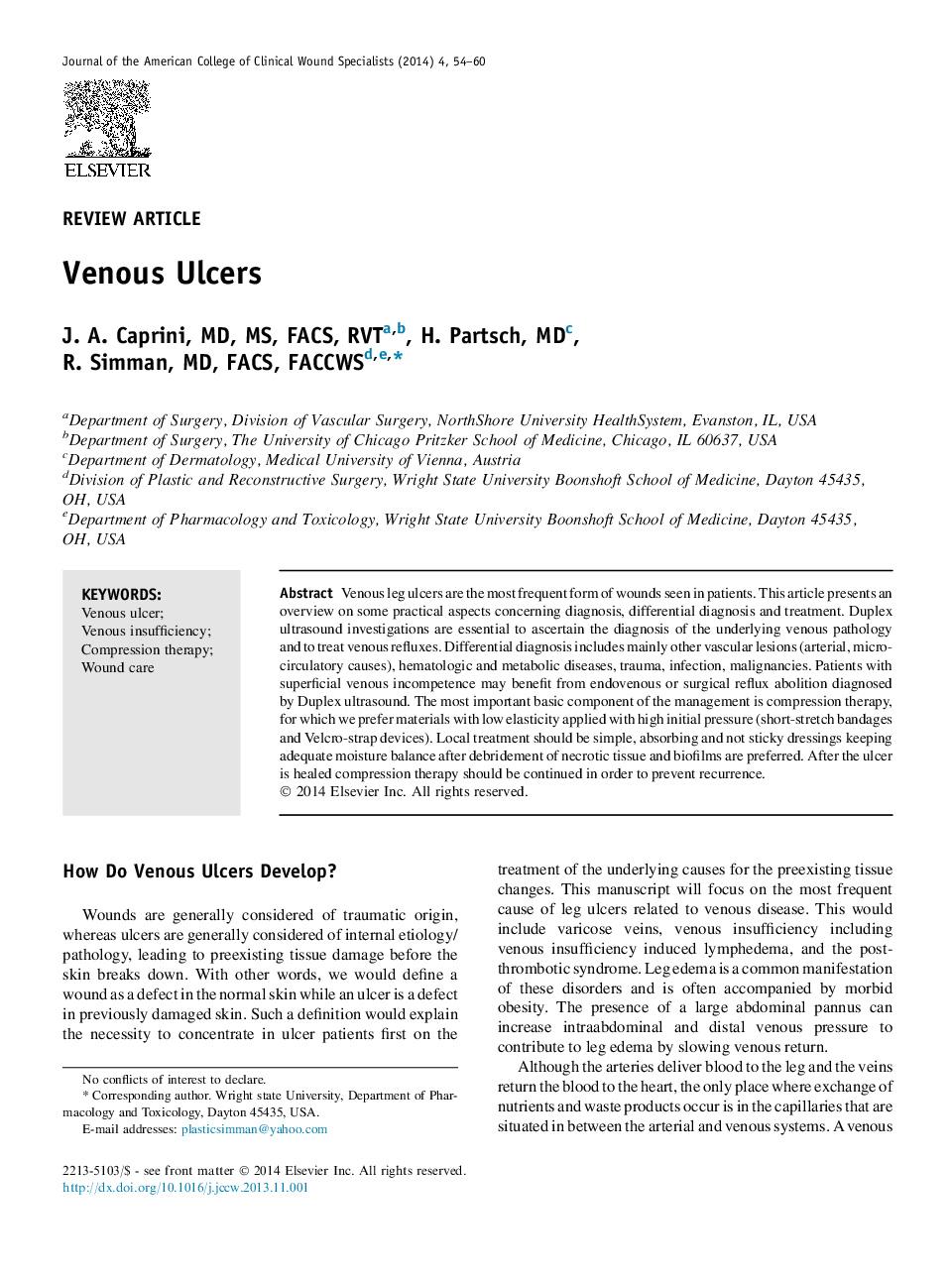| Article ID | Journal | Published Year | Pages | File Type |
|---|---|---|---|---|
| 2700471 | Journal of the American College of Clinical Wound Specialists | 2012 | 7 Pages |
Abstract
Venous leg ulcers are the most frequent form of wounds seen in patients. This article presents an overview on some practical aspects concerning diagnosis, differential diagnosis and treatment. Duplex ultrasound investigations are essential to ascertain the diagnosis of the underlying venous pathology and to treat venous refluxes. Differential diagnosis includes mainly other vascular lesions (arterial, microcirculatory causes), hematologic and metabolic diseases, trauma, infection, malignancies. Patients with superficial venous incompetence may benefit from endovenous or surgical reflux abolition diagnosed by Duplex ultrasound. The most important basic component of the management is compression therapy, for which we prefer materials with low elasticity applied with high initial pressure (short-stretch bandages and Velcro-strap devices). Local treatment should be simple, absorbing and not sticky dressings keeping adequate moisture balance after debridement of necrotic tissue and biofilms are preferred. After the ulcer is healed compression therapy should be continued in order to prevent recurrence.
Related Topics
Health Sciences
Medicine and Dentistry
Orthopedics, Sports Medicine and Rehabilitation
Authors
J.A. MD, MS, FACS, RVT, H. MD, R. MD, FACS, FACCWS,
